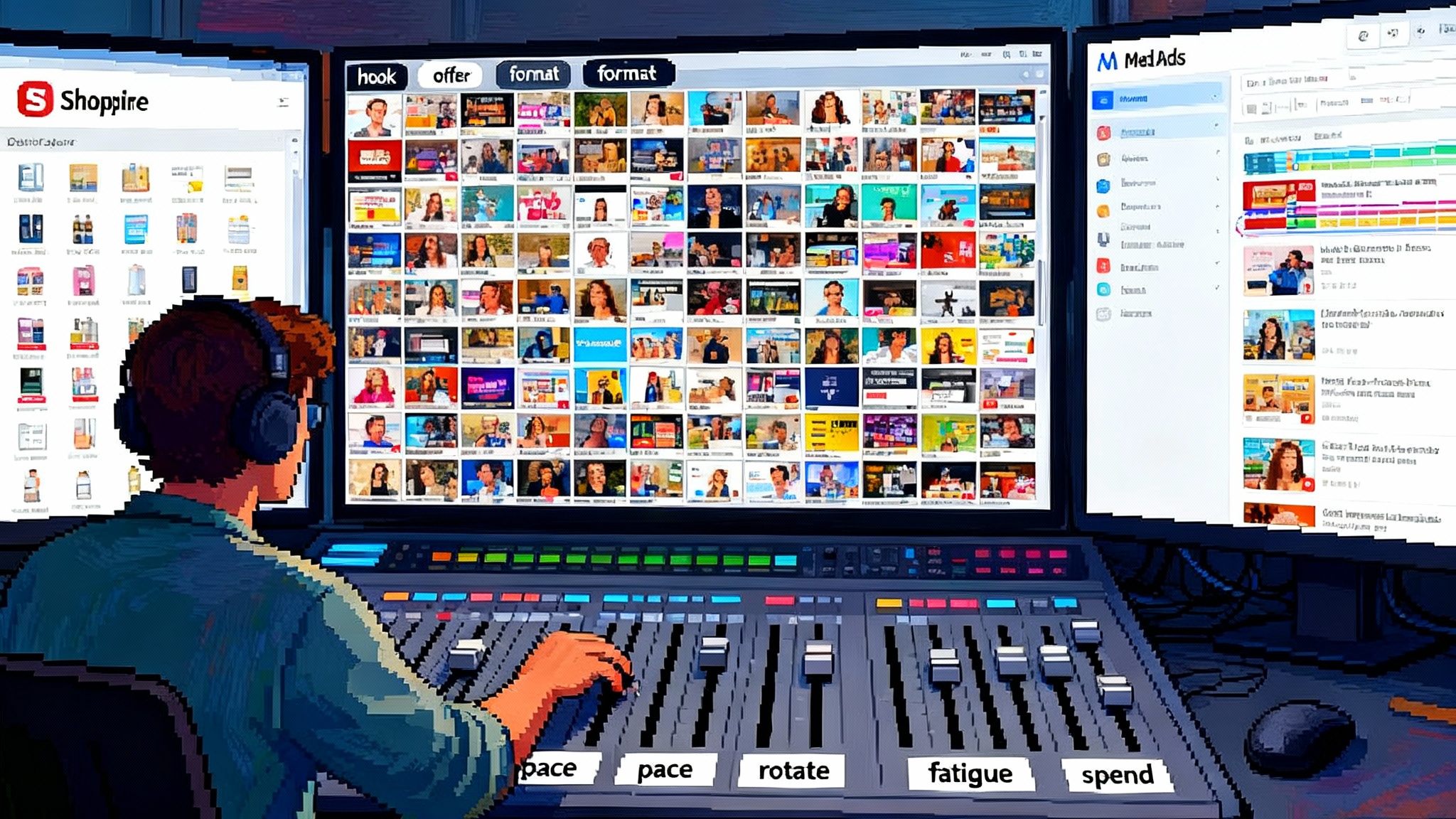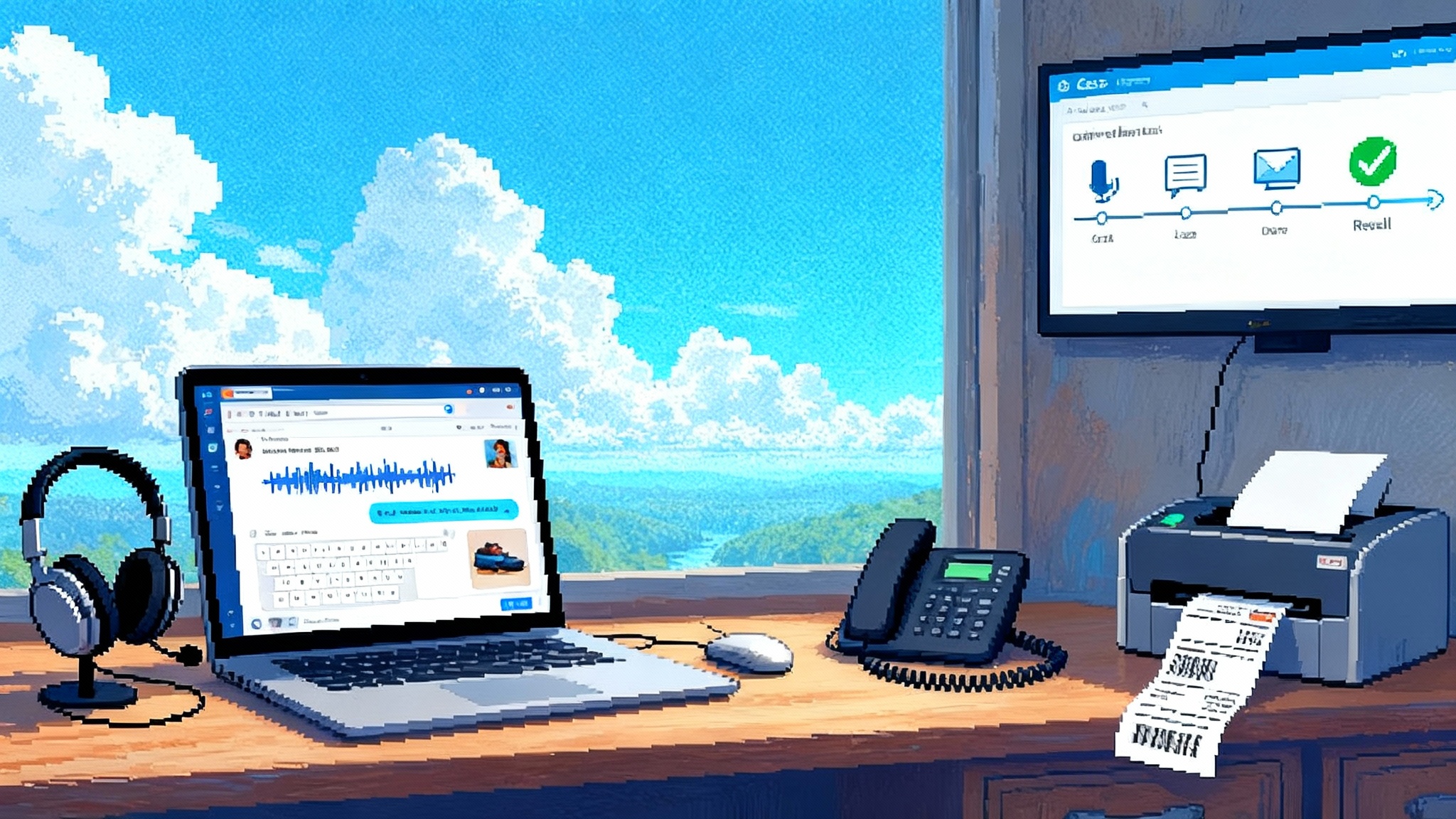The Day Ads Went Infinite: Cuttable’s U.S. Shockwave
On October 28, 2025, Cuttable offered 1,000 free Meta-ready ads to every U.S. Shopify store, flooding the auction with cheap creative. Here is how infinite supply rewires strategy, guardrails, and growth team workflows.

A giveaway that flips the market
On October 28, 2025, Cuttable launched in the United States with a stunt that reads like science fiction: 1,000 free ads for every online store in the country, purpose-built for Facebook and Instagram. That is a 3.1 billion ad spark aimed straight at the heart of ecommerce growth teams and the Meta auction. If you felt the ground shift, you were not imagining it. See VentureBeat on Cuttable launch.
Why does this matter? Because when the marginal cost of creative approaches zero, the ad market tips. The constraint stops being how many ads you can afford to make and becomes how well you can orchestrate them.
Think of today’s auctions like a farmers market. For years, most stalls sold a handful of well-prepared items. Then, overnight, a vendor showed up with a machine that can make thousands of fresh variations at once. Variety does not just fill more baskets. It changes how shoppers browse, how vendors price, and how quickly produce goes stale. The same shift is coming to your ad account.
When creative supply goes near zero
Creative has always been the most elastic lever in performance marketing because it controls two things that move the Meta auction: how likely someone is to act and how they feel about the ad experience. When the unit cost of a new concept drops to cents and the time to produce it drops to minutes, teams stop rationing ideas and begin flooding the zone with structured variation.
Here is the mechanism in plain terms:
- More tries per audience moment. Each new variant is another lottery ticket for matching intent, context, and format. If five angles worked last month, fifty angles increase your odds that a few will outperform the field today.
- Finer matching improves delivery. As more people respond to a given angle, the system infers higher likelihood of action for similar users. That can improve delivery probability for the variants that hit.
- Quality signals become a gate. The same flood that lifts winners also exposes weak or off-brand variants. Low quality signals can tax delivery and raise costs, so volume without guardrails is a false economy.
Near-zero creative cost does not guarantee cheaper media. It gives you more surface area to discover winners and a faster path to swap out losers. In practice, it turns media buying into a continuous creative search problem.
What infinite supply does to the Meta auction
The Meta auction decides which impression you see based on a mix of what advertisers are willing to pay, how likely a user is to act, and how good the ad experience is relative to others. A deeper creative bench nudges two of these levers at once: it can improve predicted action for the right user and it can raise perceived quality by showing something fresh and relevant.
Imagine a cosmetics brand that used to ship four concepts per month. With AI, the brand can ship four base narratives multiplied into hundreds of variants: short and long cuts, product-first and benefit-first, model and no model, fast and slow pacing, subtitled and silent, square, story, and reel formats. Even if most variants are average, the tails get thicker. A few combinations will make people stop, watch, click, or buy at rates the brand rarely reached with handcrafted scarcity.
But the gains are not automatic. Infinite supply also accelerates two risks:
- Over-testing churn. Constantly swapping all ads resets learning signals. The account never settles long enough to exploit the winners it finds.
- Audience fatigue in fast-forward. Freshness buys attention, but saturation arrives sooner when a brand can publish a hundred looks around the same idea in a week.
The teams that benefit will treat creative like inventory with shelf lives, not like artifacts to admire. That means planning rotations, pacing exposure, and assigning roles to concepts: openers, persuaders, and closers.
Fatigue speeds up, so rotation becomes a system
In a world of cheap creative, fatigue is not a failure. It is a predictable decay curve. An ad that grabs attention today might be invisible in ten days for the same audience. The fix is not to cling to the original. The fix is to maintain a healthy pipeline and to refresh on purpose.
Practical rules of thumb for orchestration:
- Name conventions that encode the hypothesis. If your ad name carries angle, format, hook, and audience tag, you can analyze patterns quickly and teach the system what to make next.
- Pacing instead of dumping. Stage new batches into the same ad set on a cadence. Replace the bottom performers, not the entire set.
- Exposure hygiene. Watch frequency and thumbstop-like signals per placement. When an angle’s engagement drops below your floor for three days, rotate it out.
- Small bets, fast feedback. Launch more variants at micro-budgets, then concentrate budget behind the top decile.
Treat the account like a soundboard. You are not composing one perfect song. You are remixing loops to keep the room moving without blowing the speakers.
From craft to orchestration: the new growth team job
When the supply of creative becomes effectively infinite, the scarce resource shifts from production to orchestration. The role of a high-performing team changes in four ways.
1) Model choice becomes strategic
- Pick models by media job, not brand prestige. For product demo videos, favor models that excel at motion and object consistency. For copy and hooks, pick language models that align with your brand voice and allow strict style controls.
- Maintain a synthetic brand book. Lock type, palette, logo safety zones, tone ranges, and do-not-say lists in machine-readable format so every generation respects the same source of truth.
There is a broader shift across software toward agent-like orchestration that mirrors this mindset. If you want to see how multi-agent patterns change core workflows, read about the multi agent coding IDE and the agent canvas browser.
2) Brand guardrails are non-negotiable
- Preflight checks. Run automatic scans for logo integrity, incorrect claims, and restricted content before any creative hits the ad set.
- Intellectual property discipline. Store rights and usage for music, footage, and talent alongside the asset so that scaled generation never ships an unlicensed element.
3) Multivariate rotation beats one-off production
- Design campaigns as matrices. Hooks x visuals x offers x formats. Let the system fill the grid from your brand book and push only unique combinations that add learning value.
- Define retirement rules. End an ad’s run when lift disappears against a holdout, not when someone on the team gets bored.
4) Feedback loops teach the machine
- Promote winners back into the generator. Use performance tags to bias future generations toward the patterns that worked.
- Capture negatives too. If a certain descriptor or backdrop consistently underperforms, blacklist it from future runs.
If you are exploring verticalized agent stacks that encode these loops, the Harvey's agent fabric launch is a useful signal for where category-specific orchestration is heading.
How Cuttable fits and who else is in the lane
Cuttable’s pitch is that it turns a Shopify catalog and brand assets into Meta-ready ads at scale, then pushes them directly into Ads Manager with copy and setup handled. That is very different from point tools that only write copy, only design images, or only automate budget moves.
To place it on the map, consider three clusters of Shopify-native players most merchants will encounter:
- Generators that emphasize output volume inside Shopify. These apps import a catalog and spin up hundreds of images or short clips, sometimes with basic templates and one-click launches to Meta and Google. They reduce the blank page problem and are good for speed. The downside is light brand governance unless you invest time in configuration.
- Optimizers that emphasize bids and budgets across Meta and Google. These platforms are strongest on media automation and audience building, and often include template-level creative tweaks. They suit teams that want a single co-pilot for spend, not a creative factory.
- Analysts that emphasize creative insights tied to Shopify sales. They help you see which messages and visuals produce purchase events, which in turn informs what to make next. These products are the connective tissue for teams that generate in one place and launch in another.
Cuttable is trying to collapse those jobs for brands that live on Meta and sell on Shopify: generate a lot, stay on brand, publish with a click, and learn in one loop. The bet is that the work that used to take a designer, an editor, a copywriter, and a media buyer can be orchestrated by one performance lead who sets the constraints and lets the system do the heavy lifting.
Meta’s own automation tailwind
None of this happens in a vacuum. Meta is racing to automate more of the ad stack so that you can hand it a product and a budget and it will run the campaign. Reporting in 2025 indicated a 2026 horizon for full-stack automation where images, video, copy, and targeting are handled end to end by Meta’s systems. See Reuters on Meta automation.
Two implications for merchants:
- Creative velocity will be rewarded. Platforms hungry for fresh inputs will give more delivery to brands that keep the queue stocked with high-variance, on-brand assets.
- Guardrails will matter more, not less. As systems auto-compose ads and remix elements, brands with a machine-readable playbook will maintain consistency while everyone else converges on generic.
A direct-to-consumer playbook for the infinite era
Here is a practical 30-day plan for a Shopify brand that wants to ride the wave without drowning in assets.
Week 1: Set guardrails and hypotheses
- Build a brand control file the machine can read: logo rules, typography, palette, tone, claims allowed, claims banned.
- Write five clear creative hypotheses that map to reasons people buy. Example: fast shipping, dermatologist approved, fits any sink, lasts 3 months, refills save money.
- Define your naming taxonomy: ANGLE-HOOK-VISUAL-OFFER-FORMAT-AUDIENCE.
Week 2: Generate and test small
- Produce 80 to 120 variants from your five hypotheses across four formats: square feed, story, reel, and carousel.
- Launch with micro-budgets inside one testing ad set. Let them run for 72 hours. Do not touch budgets or targeting.
- Promote the top decile by your north-star metric into a scaling ad set. Retire the bottom quartile.
Week 3: Pace the rotation
- Stage 40 new variants that build on the winners’ patterns. Keep at least 60 percent of the scaling set stable to exploit what is working.
- Monitor exposure. If a winner’s engagement rate drops below your floor for three consecutive days, replace it with a fresh sibling that preserves the angle and changes the wrapper.
Week 4: Close the loop
- Feed back what you learned. Update your brand control file with discovered do’s and don’ts. Bias the generator toward the top-performing hooks and away from duds.
- Refresh copy libraries based on actual comments and purchase feedback. Push user phrases into hooks.
Core operating metrics
- Cadence score: share of ads younger than 10 days in your active set.
- Angle concentration: percent of spend captured by your top three reasons-to-buy.
- Replacement rate: percent of ads swapped per week. Aim for replacement, not churn.
- Freshness by placement: how much of your spend hits reels, stories, and feed with ads less than seven days old.
Execution detail: from naming to budgets
A system is only as good as its labeling. Treat names as structured data.
- Ad naming template: ANGLE-HOOK-VISUAL-OFFER-FORMAT-AUDIENCE-VERSION. Example: BENEFIT_FAST SHIP-UNBOX 6S-HANDHELD CLOSE-15 OFF-SQUARE-PROSPECTING-V3.
- Library hygiene: Keep raw generations out of your production folder. Only publish assets that passed preflight checks.
- Micro-budgets: Start tests at low spend so you buy coverage. Promote by performance, not by seniority or taste.
- Holdouts: Keep a small but consistent fraction of budget on proven evergreen ads to stabilize results while you search.
What to watch as the giveaway lands
Cuttable’s giveaway will not simply dump billions of ads into the auction overnight. Most stores will claim the credit and deploy a fraction of the allocation. The cumulative effect will still be felt in three places:
- Lower variance in small markets. More brands will have at least competent creative, which shrinks the edge from basic quality improvements.
- Faster learning loops. With more variants in circulation, the system will converge on angle-level truths faster. That will reward teams who keep the pipeline stocked and their guardrails tight.
- Pricier mistakes. Sloppy claims, overbroad offers, and off-brand visuals will get punished sooner because the platform has many alternatives to serve.
Next: creatives for AI shoppers
There is one more turn coming. As agentic systems and shopping assistants become normal, ads will be read by two audiences at once: a human and an algorithmic buyer that can parse structure and intent. To prepare, make your creative machine-readable without sacrificing charm.
- Structure beats flourishes. Encode benefit, price, and offer terms in predictable places so an agent can extract them.
- Alt text is not an afterthought. Write alt text that states the claim, the product, and the offer in plain language. Think of it as metadata for an assistant.
- Proof beats puffery. If you claim six-hour battery life, show the test setup in the creative or link to a method on your site. Agents will look for verifiability signals.
- Variant-level taxonomy. Use consistent, queryable names so an assistant can request only “benefit-first, 6-second reels with price shown and inventory over 500.”
In other words, build your ad system so that a human pauses and an agent can parse. That is the frontier where creative quality and machine comprehension will both lift delivery.
The bottom line
When creativity gets cheap, orchestration becomes the craft. Cuttable’s 3.1 billion ad spark tells us the era of infinite supply has arrived for Shopify merchants on Meta. The winners will not be the brands that ship the most assets. They will be the brands that turn assets into a system: guardrails locked, hypotheses crisp, rotations disciplined, and feedback feeding the next wave. In this market, control is not the enemy of creativity. It is what lets creativity scale without losing the plot.








